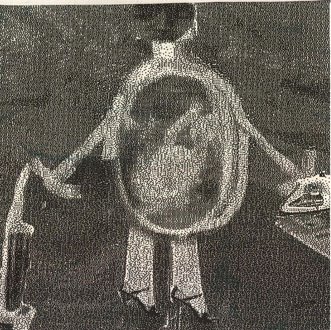 picture courtesy of- http://www.myspace.com/zapophenia
picture courtesy of- http://www.myspace.com/zapopheniaEmma Plant-s2586016
words- 1230 (not including direct references)
New Communication Technologies Essay
In 2006 Google signed a $900 Million deal to allow a Google search facility on MySpace! What is the go with that?
This essay will be discussing the new MySpace boom and more specifically its users, also known as the MySpace generation. Is MySpace affecting today’s youth more negatively or positively? It seems that online interaction is no longer a supplementary form of communication, but the dominant communication for this MySpace generation. Is this a bad thing?
Basically MySpace (ironically spelt with no spaces) is an online communication technology that allows people to interact. It was founded in July 2003. It is Computer Mediated Communication (CMC) (Boyd, 2004, p.1). Catherine Dwyer of pace university says ‘MySpace is a social networking site that encourages social interaction by emphasizing connections through shared interests or causes’ (Dwyer, 2007, p.1). MySpace differs from other online interaction sites as its focus is on popular culture and music (Dwyer, 2007, p.1). Other similar sites are, facebook, flixter etc. However, MySpace has the highest retention rate of 67%, and the largest global network of users (www.cqresearcher.com).
See for yourself - http://www.myspace.com/
What is MySpace- en.wikipedia.org/wiki/MySpace
The new generation using MySpace has been described as ‘Generation @” (Boyd, 2006, p.8). This age group encompasses 12- 17 year-olds of the Y-generation.
However, while this cohort is the majority users, anyone can join MySpace. Once an individual has joined they create an online profile, listing things like; interests and hobbies, age, religion, sex etc. MySpace is popular as a consequence of its innovativeness, but also because it is in vogue (Dwyer, 2007, p.3)
Online interaction differs from face-to-face communication in a variety of ways. One of the defining characteristics of online social networking (MySpace) is impersonality. The people users interact with are not treated as other human beings, but are said to be more like characters (Dwyer, 2007, p.4) In a qualitative study about MySpace, one user said ‘the relationships formed on MySpace are usually superficial’ ( Dwyer, 2007, p.6). However, is the definition of friendship that imperative in determining the effect of MySpace? After all friendships are understood within a contextual frame and MySpace is a global network.
Users can maintain relationships with people they do not or cannot see on a daily basis (Dwyer, 2007, p6).According to some psychologists MySpace is said to be a useful outlet for self- expression and creativity that is easy to access (D. Brandt, 2007, p28). The MySpace generation is often critiqued as being ‘false communicators’ and ‘superficial’, but they are not given credit for the fact that they are aware of its conventions and downfalls (Morrissey, 2007, p.28). MySpace users have even said that interacting on MySpace is in someway like practice for the real world (Morrissey, 2007, p.28).
The way in which MySpacers represent themselves is known as impression management (Dwyer, 2007, p.2). This impression management is one of the key issues of MySpace. In the physical world, i.e. face-to-face communication, the body operates as a rich site for information (Boyd, 2004, p.2). Dress, ethnicity, physiological state, voice etc, are physical cues that help determine appropriate, and more importantly honest face-to-face behaviour (Boyd, 2004, p.2).This means the users have great freedom to create their identity. Social networking sites like MySpace do not have physical walls for context; consequently the users decide to create this context for themselves (Boyd, 2006, p.6). A good thing about creating their online ‘impression’ is that they are not limited by society’s social norms (Bradley, p.13); this means users are not restricted because of looks, race or age. The MySpace generation has been called ‘more ethnically diverse, optimistic and digitally intone than previous generations’ (Geraci, 2006, p.8).
As a consequence of having freedom to create identity, privacy is a continuous issue for the MySpace generation. On MySpace you can become anonymous, i.e. you can browse other people’s web sites and they will not know who you are (Dwyer, 2007, p.8). However privacy settings can be set so that only approved people can look at another’s site. While there have been relatively few privacy breaches, problems have still arisen. Examples publicised in the media of late have been; stalking, false identities and paedophilia .However ‘MySpace’ should not be totally blamed for privacy breaches, as it is the individual user that decides what information they are willing to disclose (Dwyer, 2007, p.5).
A question that could be asked is; ‘has this number significantly changed for the MySpace generation as apposed to older generations?’ According to a youth internet safety survey carried out in 2001, 1 in 5 American teenage girls have been sexually solicited online (Cassel, 2006, p.2). In 2006 approximately 50, 000 online predators were online at any given time (Cassel, 2006, p.3).However, many say that privacy issues for women have been consistent throughout history, irrelevant of what technology was available (Cassel, 2006, p.4). As mentioned earlier, due credit is not always given to this MySpace generation. While they are often portrayed as innocent, weak and incompetent, they are technologically savvy, educated and self-sufficient (often this MySpace generation are the ones mediating safety on the internet) (Cassel, 2006, p.4). While parents of the MySpacers become distressed from media hype, MySpacers are better informed and aware of issues than their parents are (www.cqresearcher.com).
It appears that there are many downfalls of MySpace. One dominant downfall is privacy. 20% of users do not feel safe (Rosen, 2006, p.2.). MySpace users have reduced social cues and thus a filtered out perspective (Dwyer, 2007, p.1). MySpace generation is often characterised as ‘bratty’, i.e. they feel as if they are entitled to opportunity (Boyd, 2005, p.2). There is much evidence that MySpace fosters social isolisation (Rosen, 2006, N/A). MySpace also encourages secretive behaviour and immorality (Rosen, 2006, N/A). In a little world of their own, MySpacers are subject to pornographic material, sexual pressure and vulgarity (Boyd, 2006, p.11). However, in saying this, morality is said to be a developmental process that occurs mainly in childhood. By the time adolescents are using MySpace, they are at the stage where they are making independent judgements about morals they have been taught. Adolescents will do this no matter what their socialising network (online, at play, in home etc) (Bradley, N/A, p.4).While older generations might believe users will have insufficient social skills when they come into the ‘real word’ (work force, adult- life), once this MySpace generation ages, their behaviour will be the new social norm (Boyd, 2005, p.2).
Marketing Insight reveals that the current My space age group influenced 500 billion dollars of their parents purchases (Geraci, 2006, p.3).Apparently MySpace bombards teenagers with too many unsatisfactorily censored advertisements (Dwyer, 2006, p.4), consequently promoting materialism, sexuality, and globalisation etc. Recently however, ethical advertisements for ‘youth suicide help’ and ‘depression’ have also been put into place (www.abc.net.au/news). “It is not like my space is a no rules, lost-boys-like world, It has its own system of etiquette and rules” (Bradley, 2006, p.11). It seems MySpace has the same downfalls as most new technologies (Older generation lacks understanding, privacy issues and alike).
Back to the original question; ‘I MySpace affecting today’s youth more negatively or positively? Negative Impacts have already been discussed, so what are the positives? MySpace can help in the development of personal development and social skills (Dwyer, 2007, p.3). These skills include; finding friends (note the term friends is used loosely), encouraging creativity (through its multimedia format), and develop computer and technology skills. MySpace is said to be fostering a smarter generation that frowns upon violence, harassment and inhumane activities (Geraci, 2006, p.9).Research indicates that suicide and violence rates have plummeted in comparison to other generations (Geraci, 2006, p.9).
Another positive is that MySpace opens up great choices and opportunities. There is a world of doors for them to open up as soon as they log on (Danah, 2006, p.4). The fostering of creativity on MySpace acts like a therapeutic outlet to express self (Brandt, 2007, p28). It feels good for the user to know they have an audience and people are listening (even if they are not). The development of technological skills is obvious. Many older people study courses to gain skills MySpacers already have and learnt for free. These technology skills will enable them to understand many future practicalities of workplace and where it is heading (Geraci, 2006, p.10). For older generations MySpace enables the understanding of adolescents, and benefits such as discovering new Music and talent (Geraci, 2006, p.11). Music labels often use MySpace to scout out new talent (Dwyer, 2007, p.3). There really are many benefits of MySpace. Taking into account the negative and positive, it appears there may be more positives. In understanding that most new technology fads have the same negative reactions as MySpace does, it could be concluded that MySpace is having a relatively positive effect on today’s youth.
Reference List
(Bradley,)
Karen Bradley () ‘Internet Lives: Social context and moral domain in adolescent development’, Head-Royce School, Oakland, California, pp-1-18.
(D. Brandt, 2007, p28)
D. Brandt (2007), ‘Consumer attention to advertising’, Marketing Week, London, pg.28.
(Cassel, 2006, p2)
Justine Cassel (2006), ‘High tech or High Risk: Moral Panics about girls online’, MacArthur Foundation Series on Digital Media and Learning, North-western University, USA.
(http://www.cqresearcher.com/)
(2007)’Cyber Socialising-is the internet potentially dangerous’, the congressional Quarterly, USA, vol.16, pg. 625-648.
(Danah, 2004)
Danah Boyd, Michael Chang (2004) ‘Representations of Digital Identity’, Information and management systems: University of California’, Berkley.
Danah Boyd (2006) ‘Friends, Friendsters, and MySpace top: 8’, First Monday 11:12, December.
http://www.firstmonday.org/issues/issue11_boyd/index.html.
Danah Boyd (2005)’ None of this is real’, The best Software Writing I, Eds.Joel Spolsky.
Danah, Boyd (2206) ‘Why youth (heart) Social Network Sites: The Role of Networked Publics in Teenage Social Life’, MacArthur Foundation Series on Digital Learning, Identity Volume (ed. David Buckingham).
(Dwyer, 2007)
Catherine Dwyer (2007) ‘Digital relationships in the ‘MySpace’ generation: Results from a qualitative study’, Hawaiian International Conference in System Sciences, Hawaii p.1-9.
(Geraci, 2006)
John Geraci (2006) ‘Meet the net Generation’, NGen Big Idea, July, p.1.
(Morrissey, 2007)
Brian Morrissey (2007) ‘Playschool, P&G Tapping Targeted ‘Mini-MySpacers’, Brand week, Apr 9, ABI/INFORM Global, p.13.
(Rosen, 2006)
Larry D Rosen (2006) ‘adolescent in MySpace: Identity formation, Friendship and Sexual predators’, California State University, June.







No comments:
Post a Comment